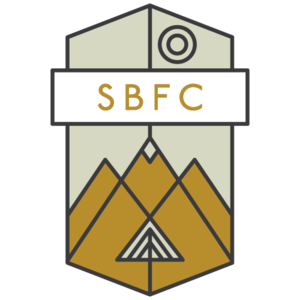Bianca Signorini
Moose Creek Trail Crew Member
Hitch #4, 7/23-7/31
Nez Perce-Clearwater National Forest
Bilk Peak, Indian Park and Beyond
It’s impossible to describe the beauty of the vast wildernesses we get to experience in the West, impossible to capture in photos. The Selway-Bitterroot Wilderness contains such a diverse and vast range of landscapes, throughout this summer I’ve found myself speechless countless times by the sheer scale of solitary, uninterrupted wild space. Hitch #4 took us to one of the most beautiful places I’ve seen. Dramatic rock formations reaching into the sky, lush meadows, more beauty unfolding with every ridge climbed.
Working on trails brings you through some of the most intense contrasts you’ll ever experience: the happiest of moments and the lowest of moments. This is also difficult to describe. The beauty and joy comes at a cost, the days were long and hot, we found ourselves in intense thunderstorms, relentless mosquitoes, the terrain rugged and steep. But we always found ourselves laughing while we cooked dinner, spirits were high in spite of sore muscles. Low: my work pants ripped about two thirds of the way around my leg. High: we made “snow cones” with Mio and some snow Sam saved in his Hydroflask. Low: I left a pair of crosscut handles an embarrassing distance behind us on the trail. High: we ended the hitch at Red River Hot Springs. It’s a balance that shifts seemingly every minute of every hitch, it’s difficult to explain how dynamic and satisfying and difficult a day working trails can be.
Describing hitch #4 in statistics, which doesn’t do it justice, our humble crew cleared just over 26 miles of trail. I hiked about 70 miles in 8 days, bouncing between 7,000 and 8,500 feet in elevation, carrying nine days of food and gear and tools along the way. We brushed 4 miles of trail. We, of course, made four wilderness snow cones.
I can tell you about the hitch objectively in words, but the things that are really worth describing are these little bright moments: we finished the hitch at red Red River Hot Springs. In a warm pool we laughed and joked in the familial way a trail crew does. We compared bruises, reflected on the beautiful wilderness we’re lucky enough to spend the summer in, enjoyed curly fries and root beer floats in the way only ravenous trail crews can. Just like our beloved Idaho forests are impossible to describe in words and photos, so are these contrasting pockets of joy and pain that trail crews experience together day by day. And I wouldn’t have it any other way.
Bianca hiking with Bilk Peak in the background
The first campsite of the hitch






























